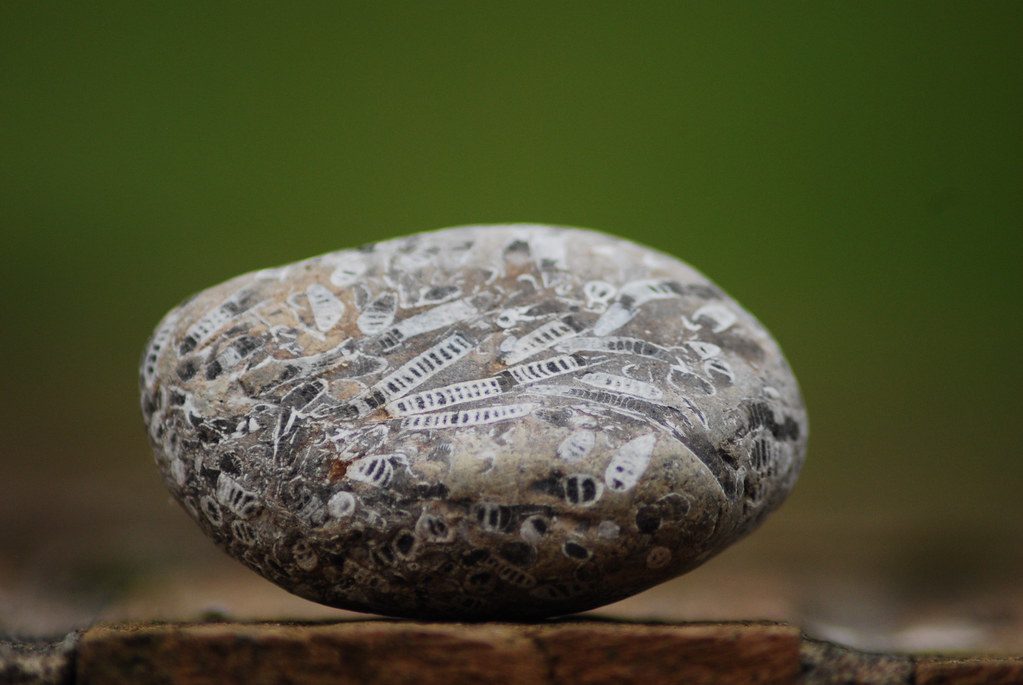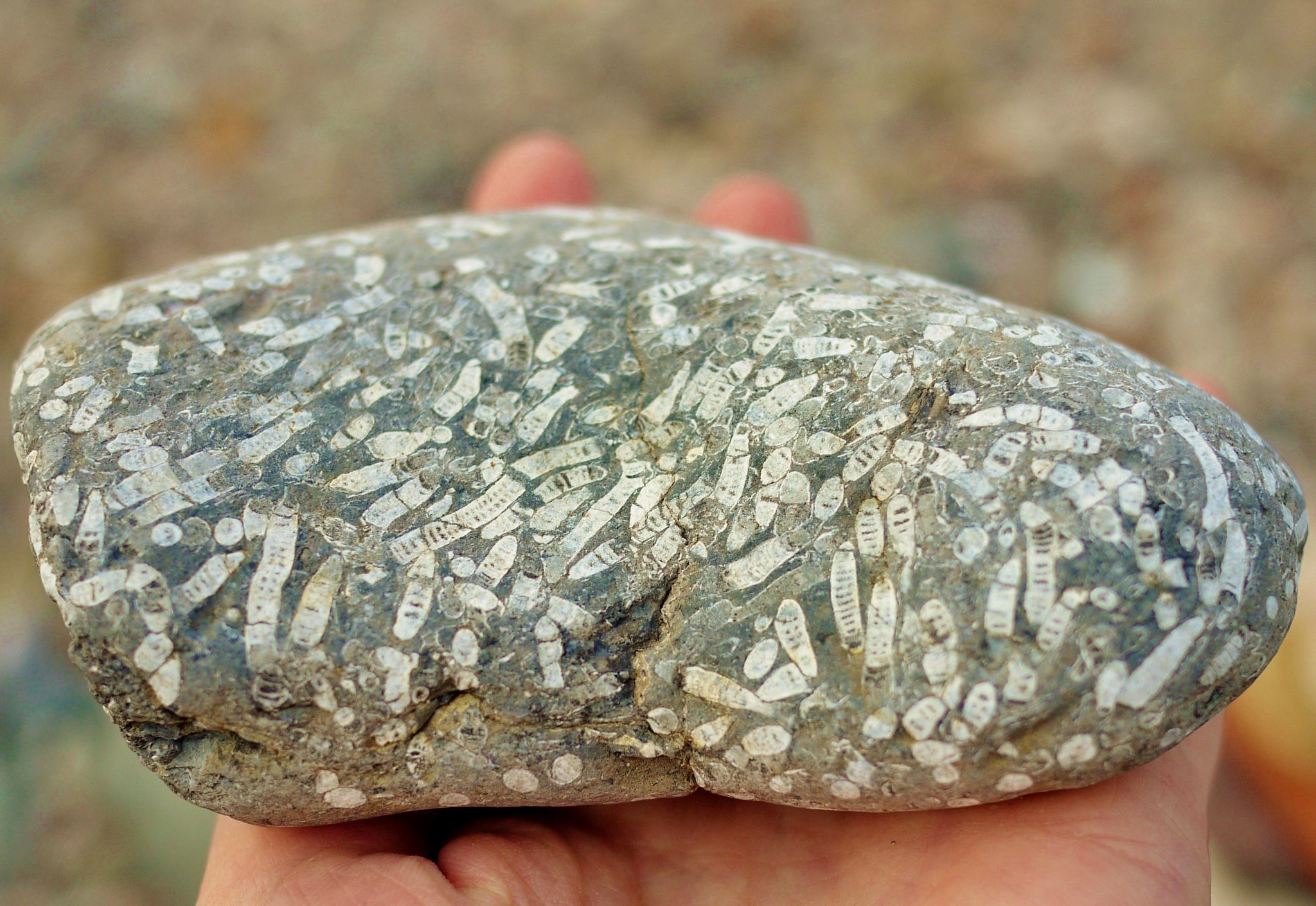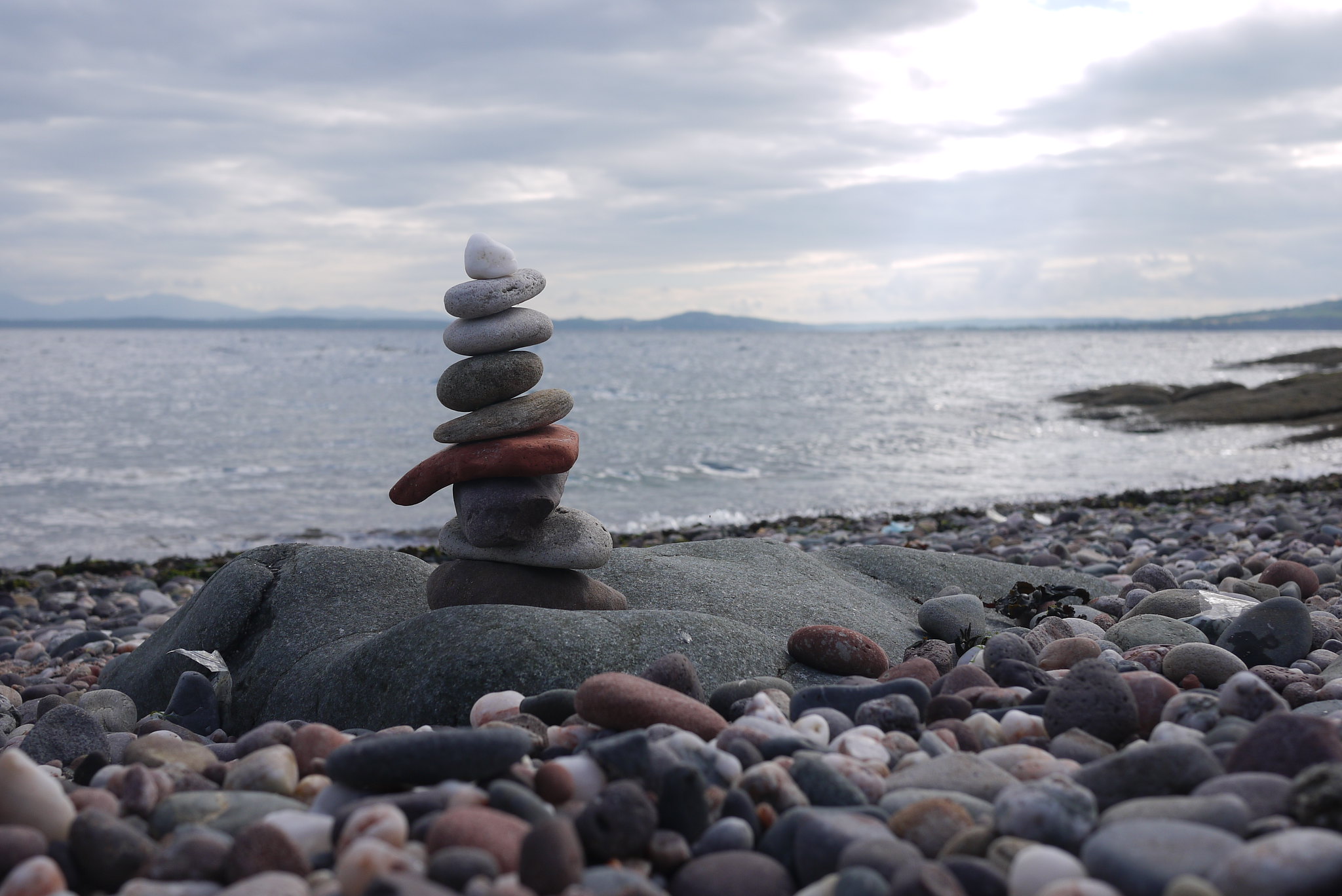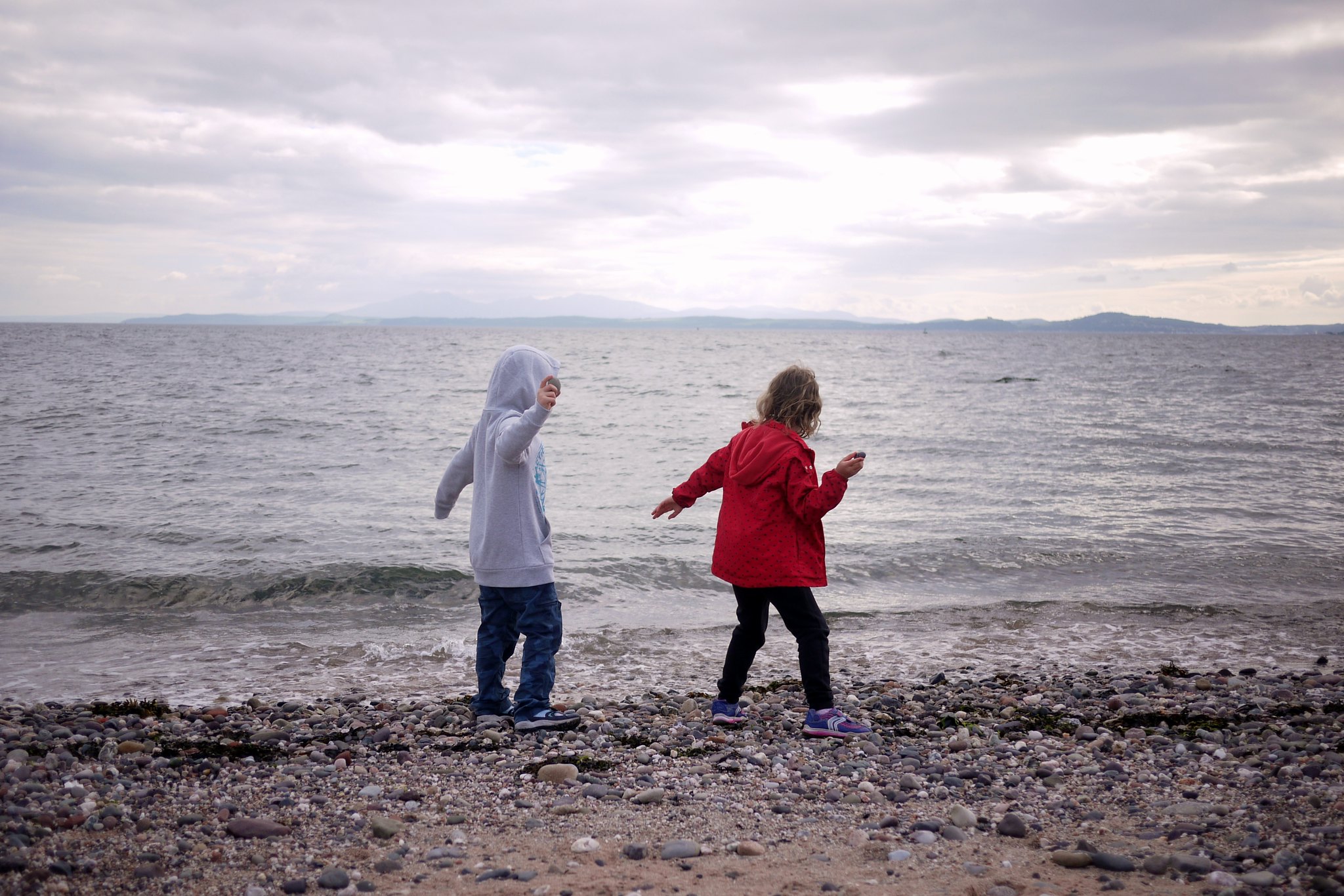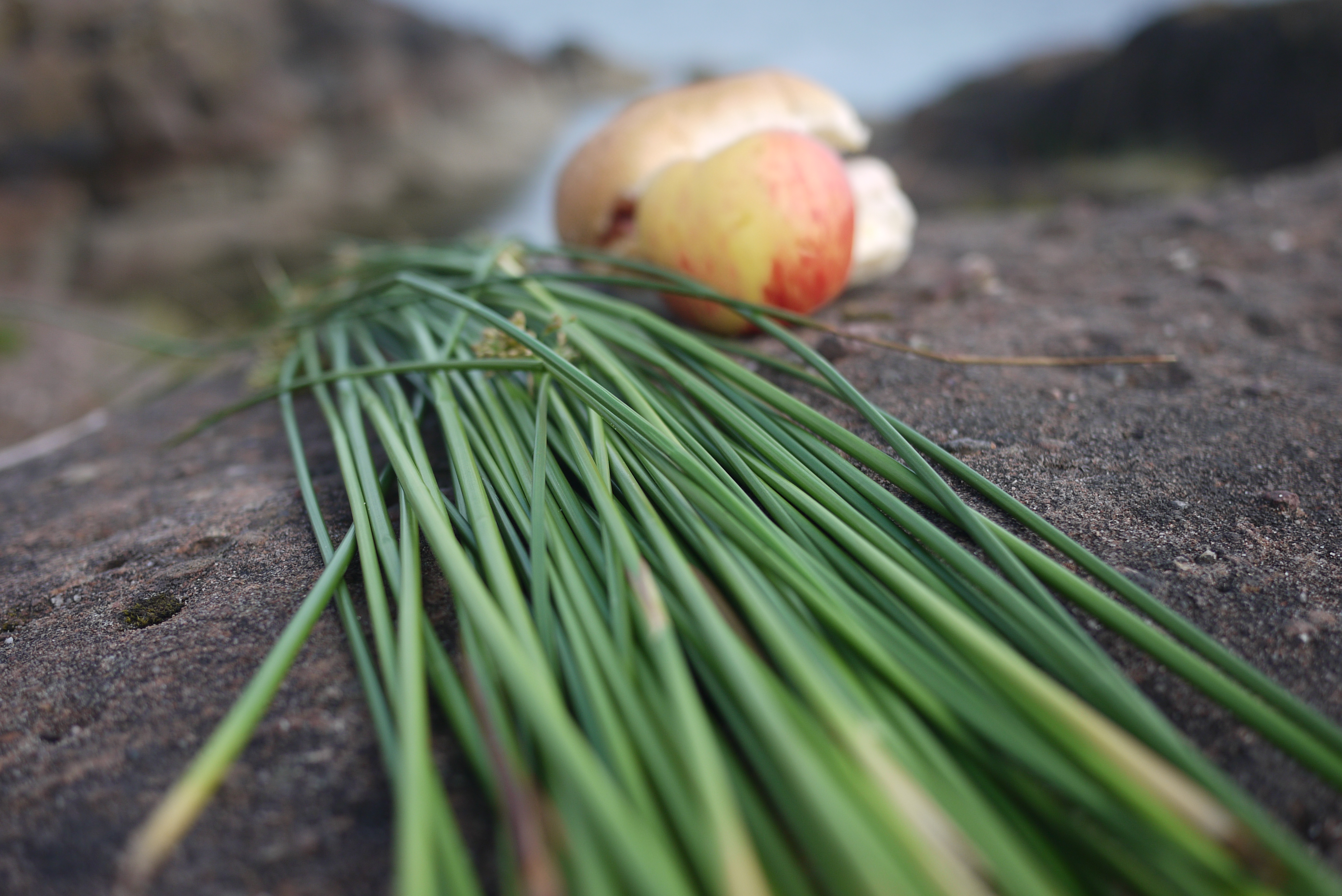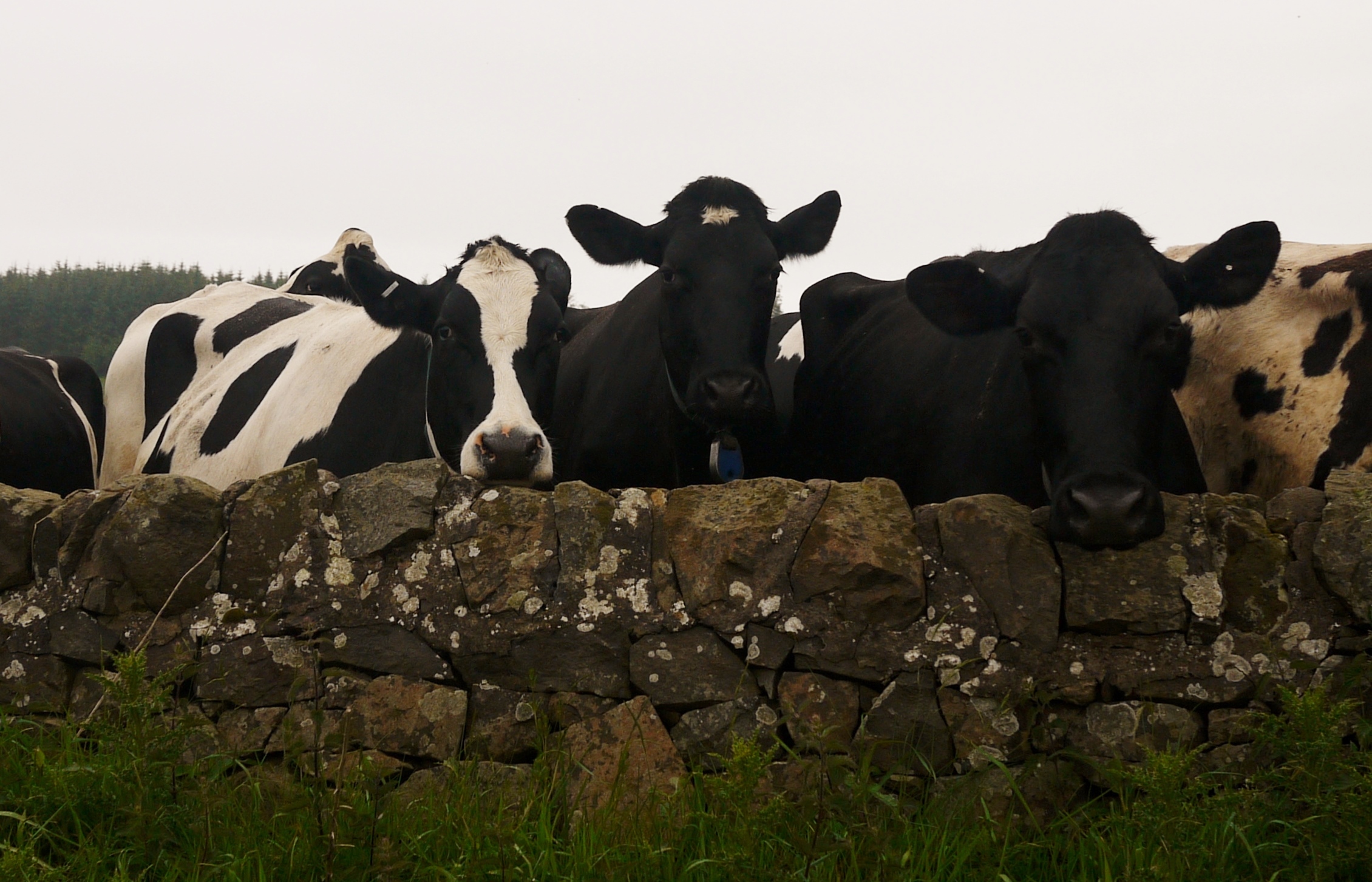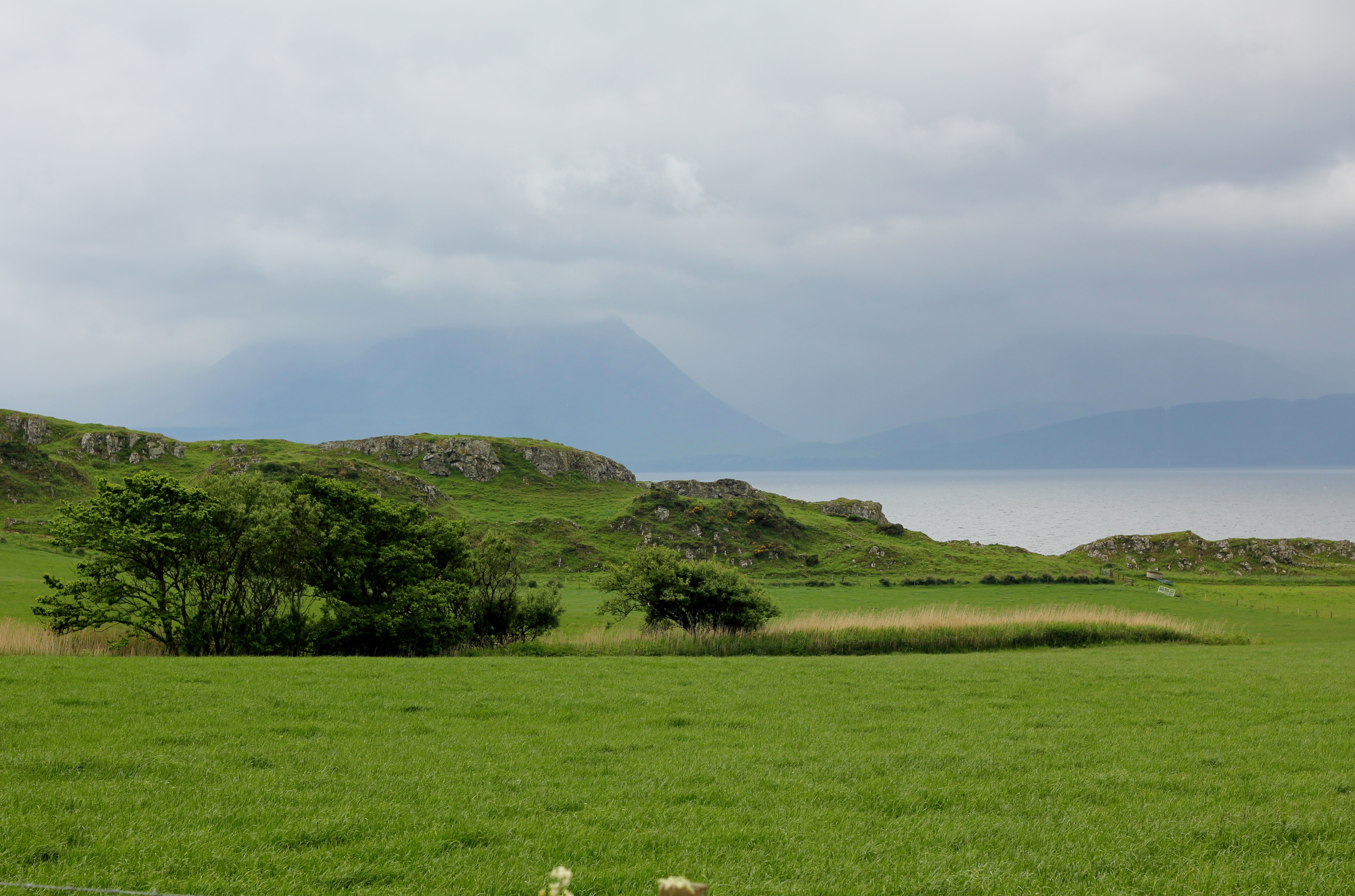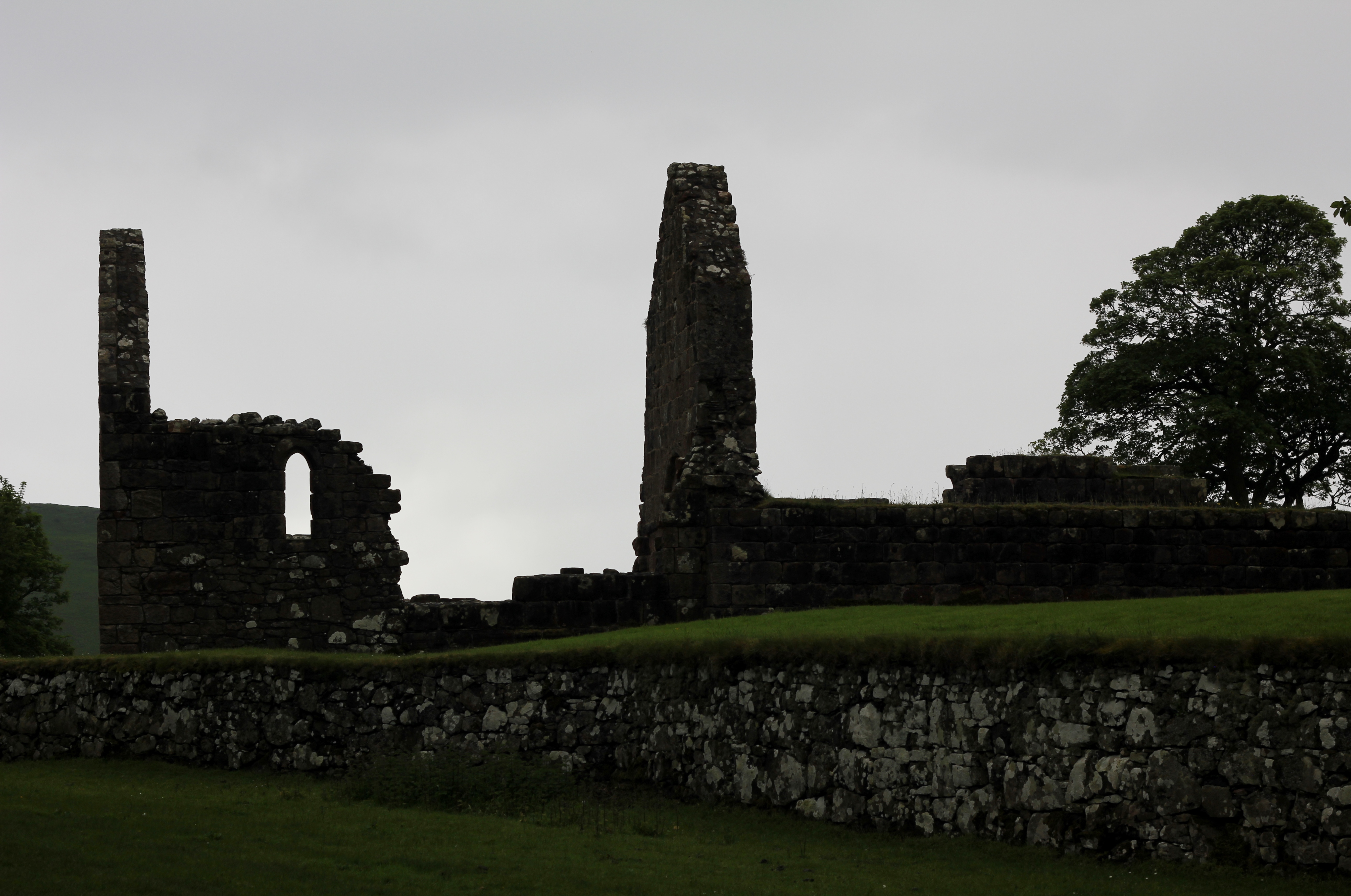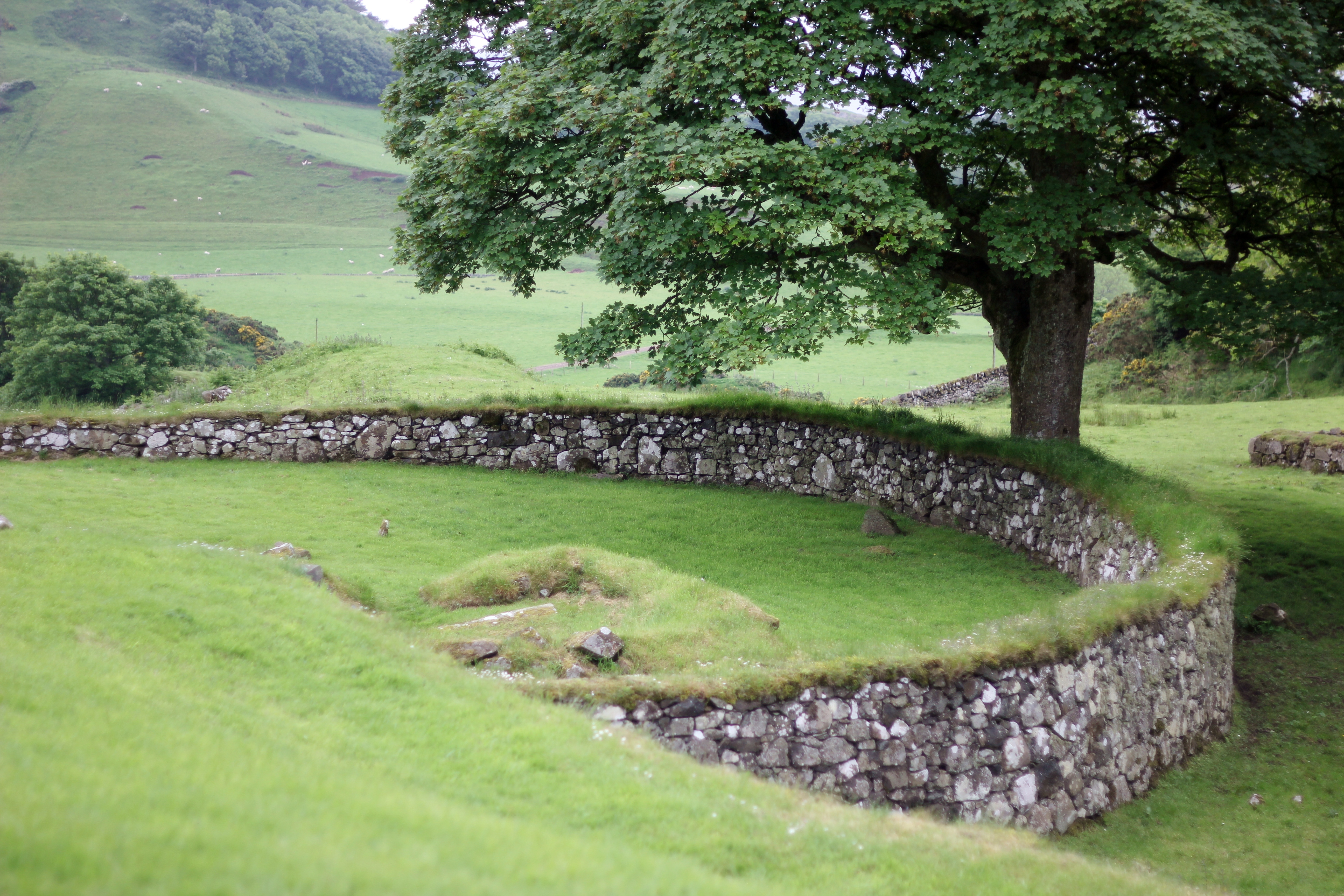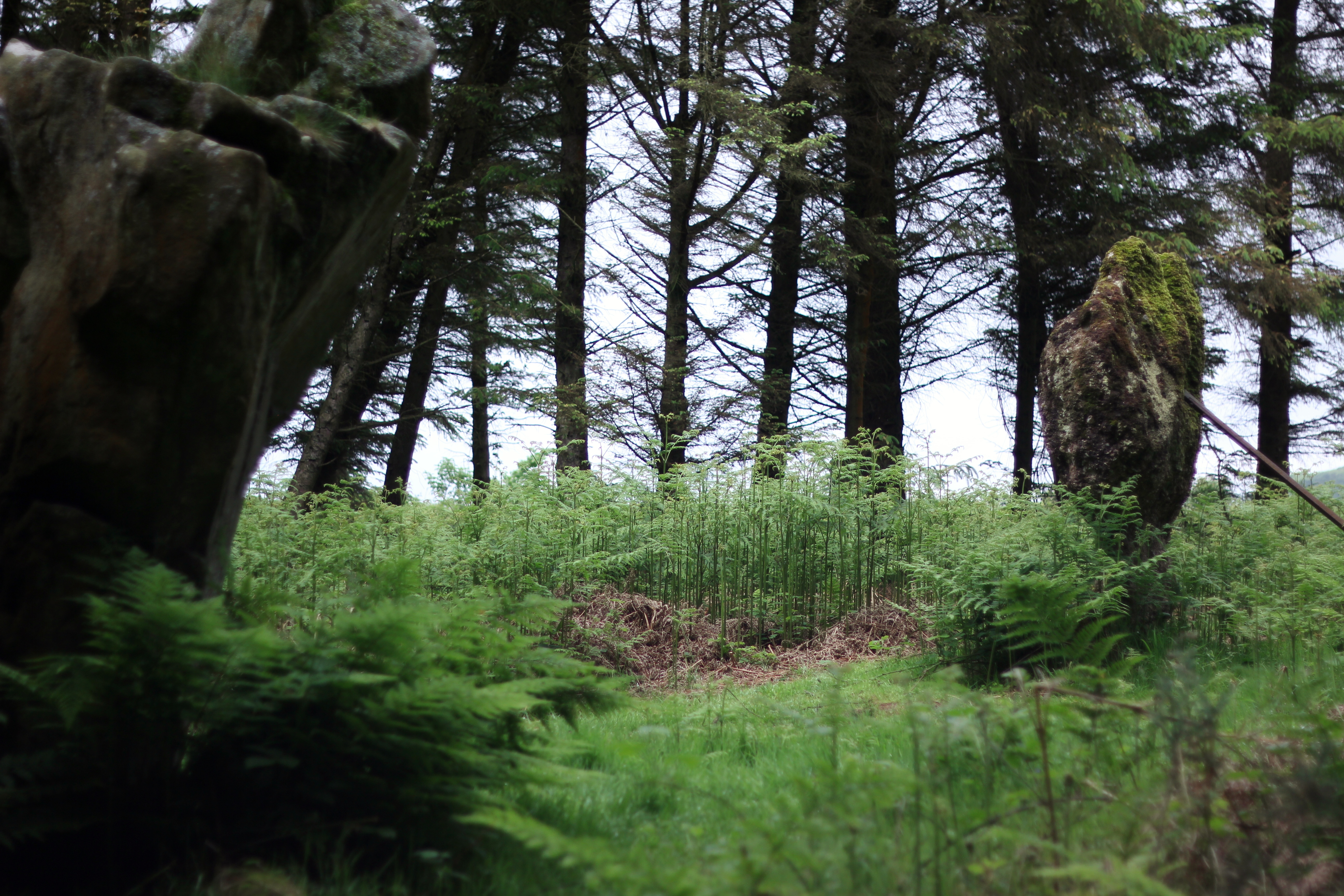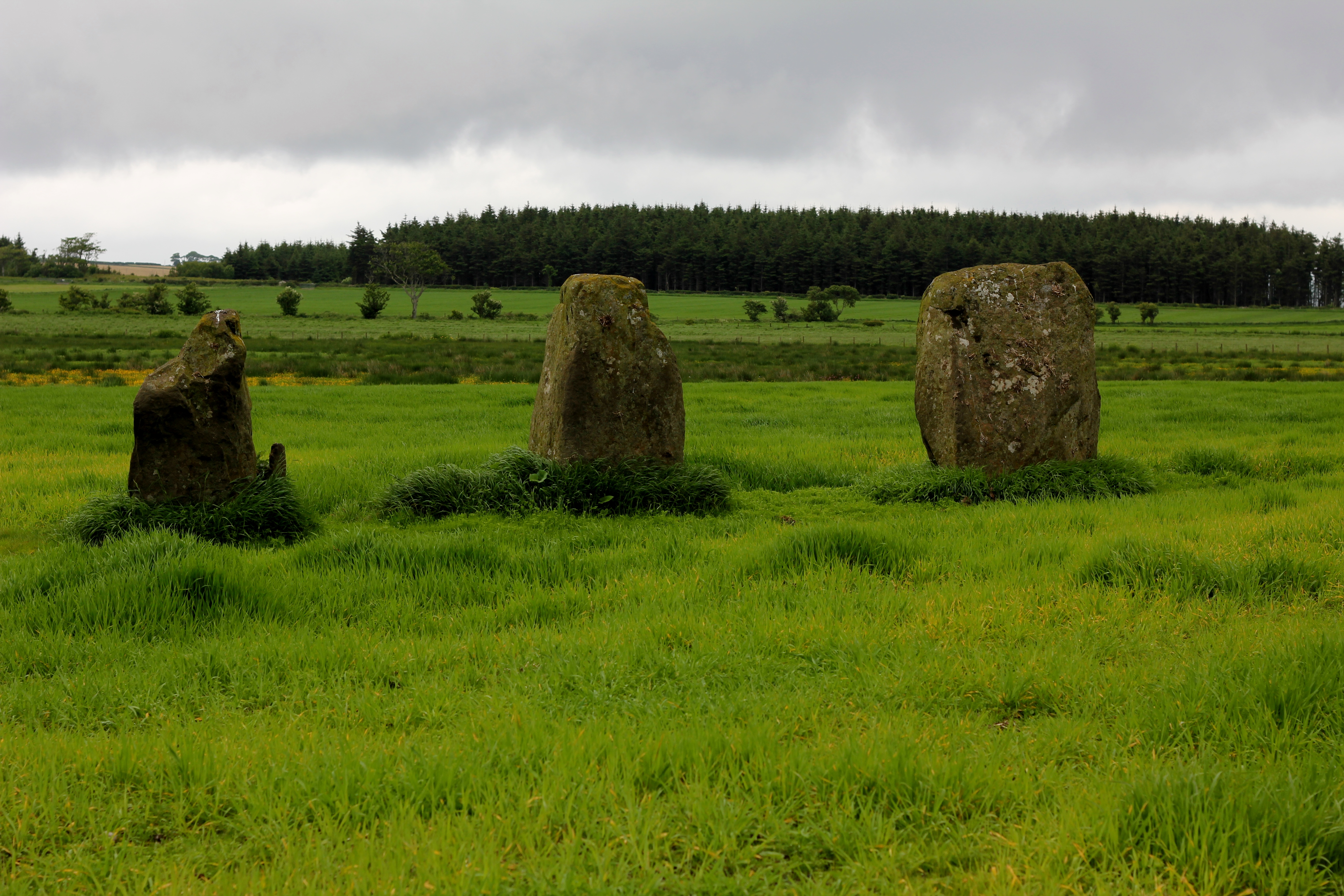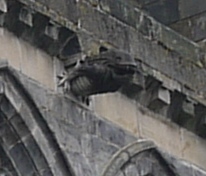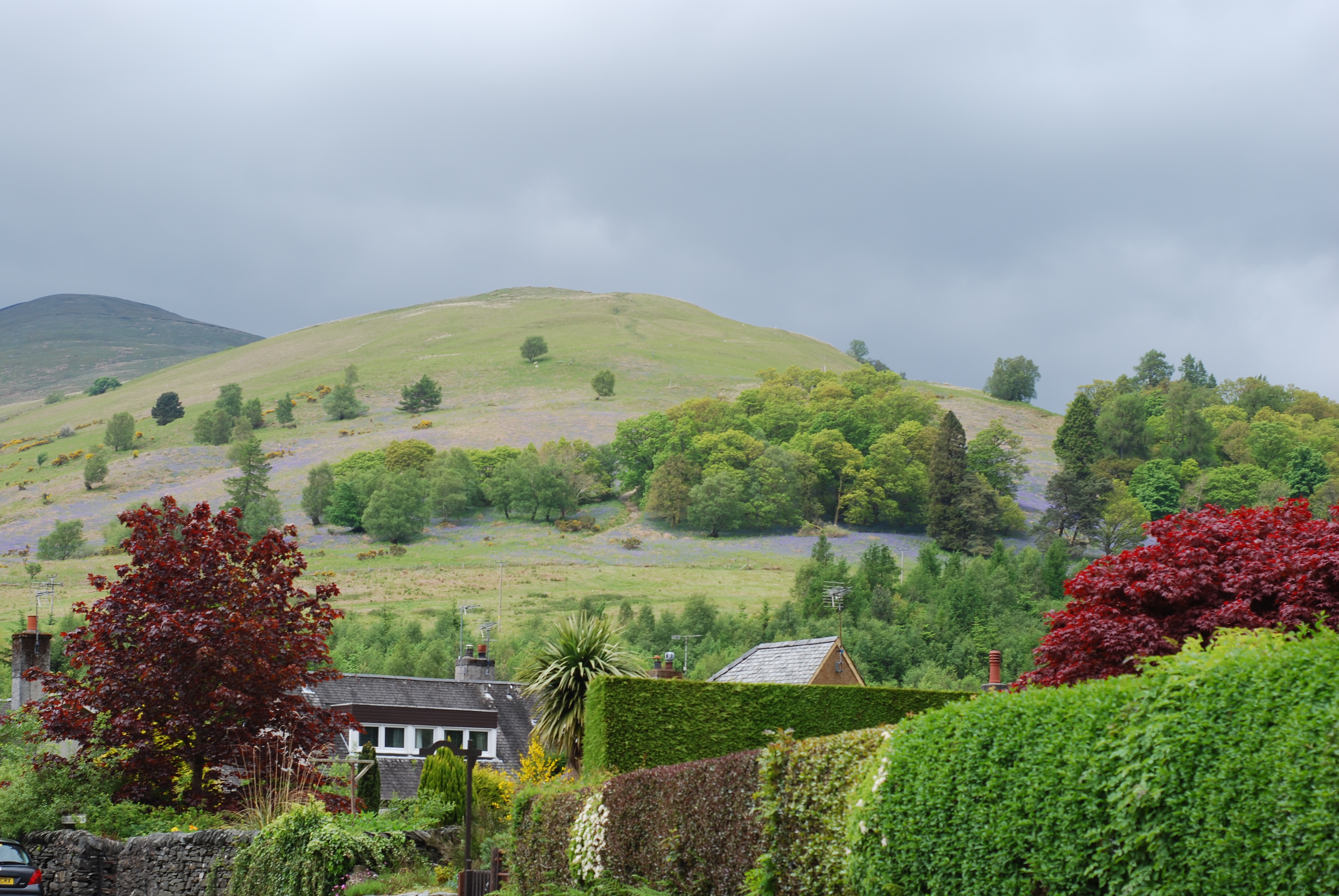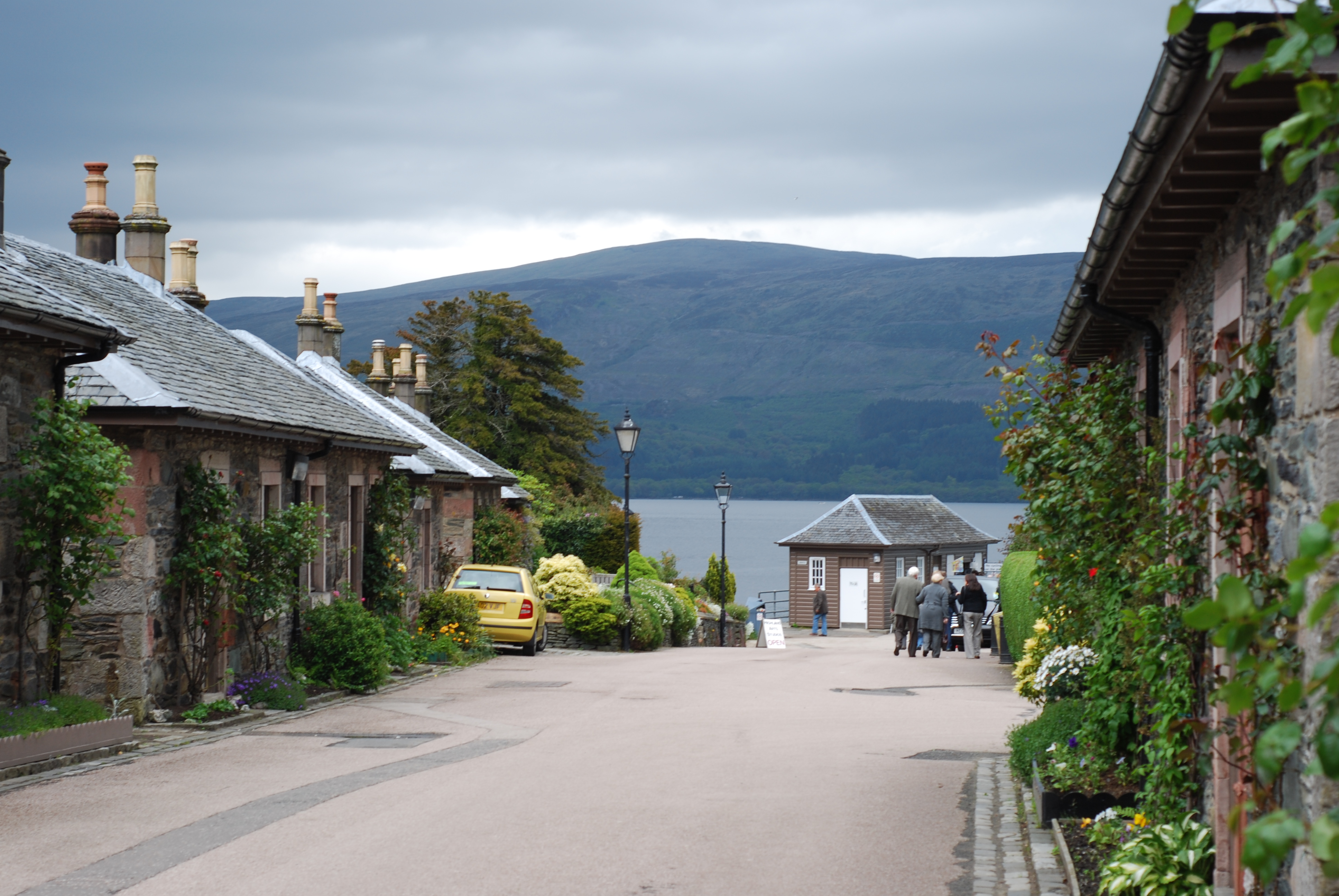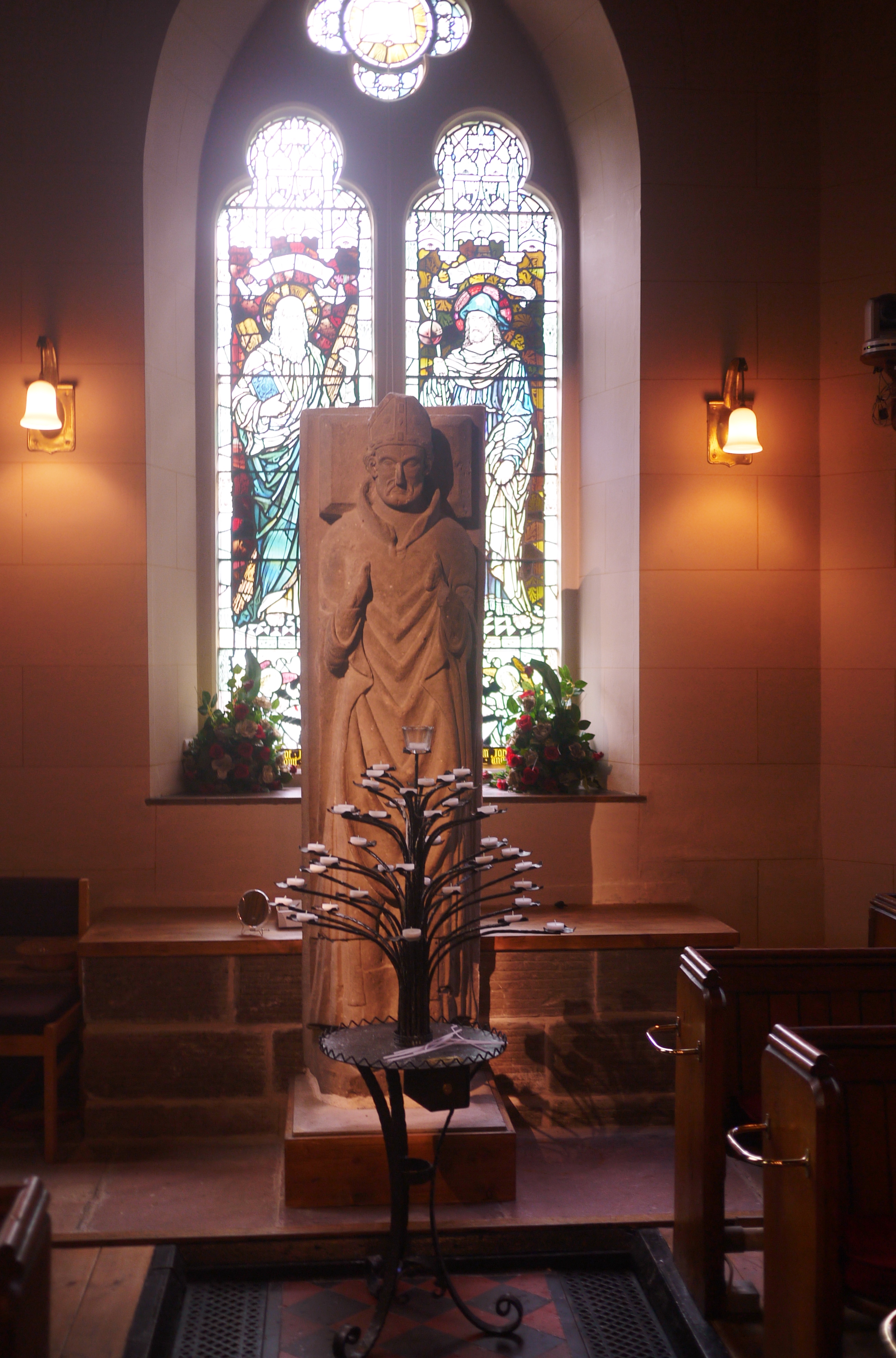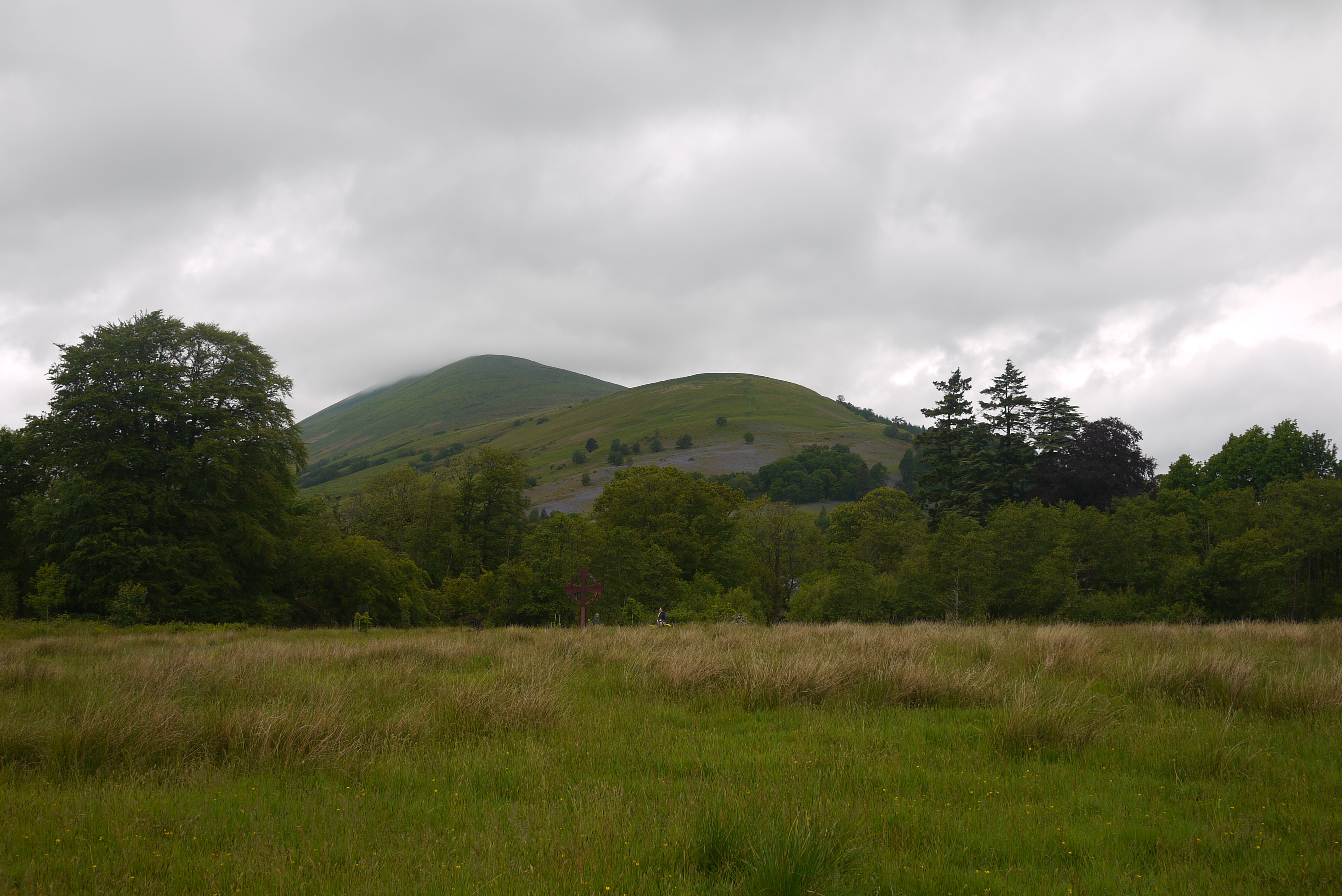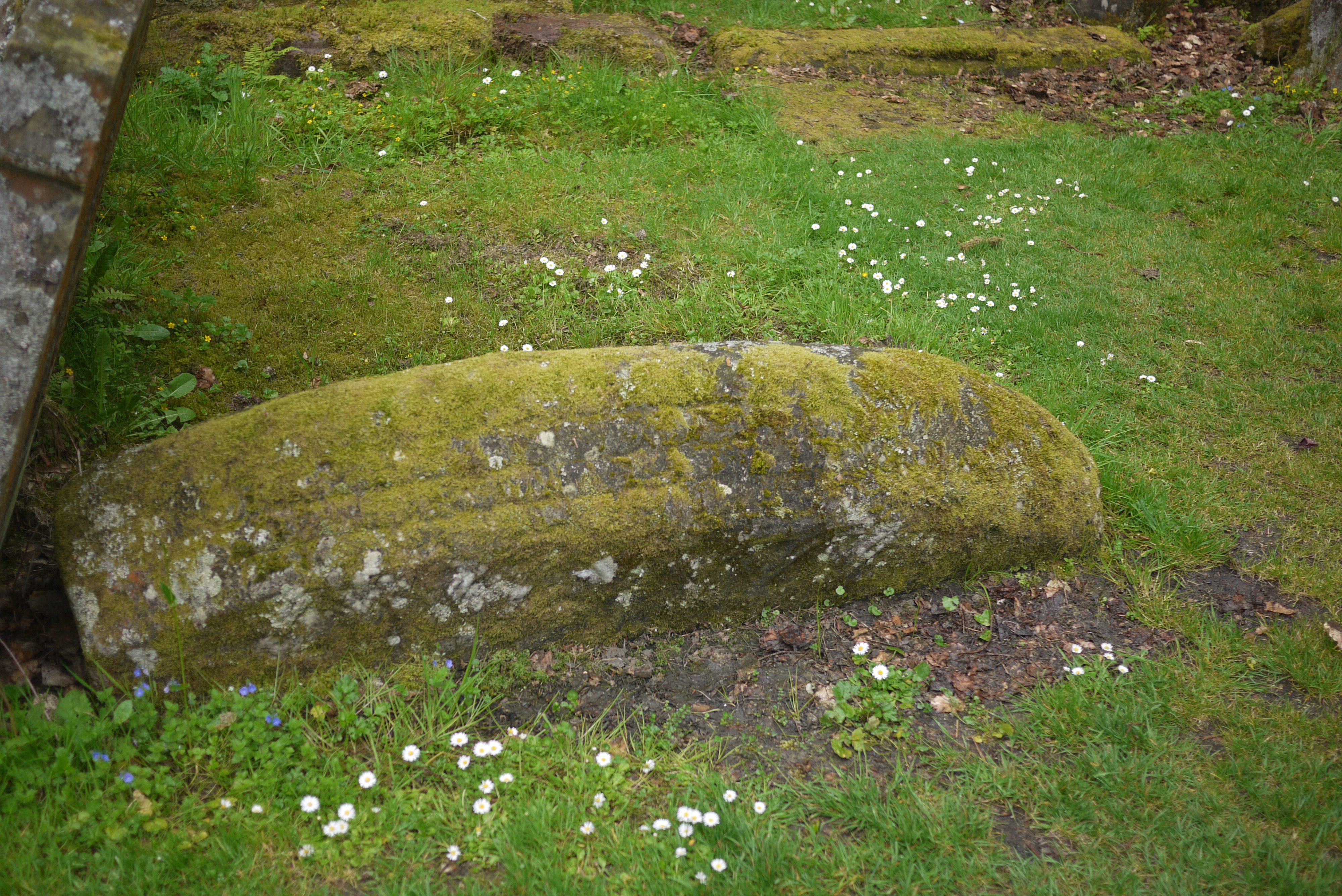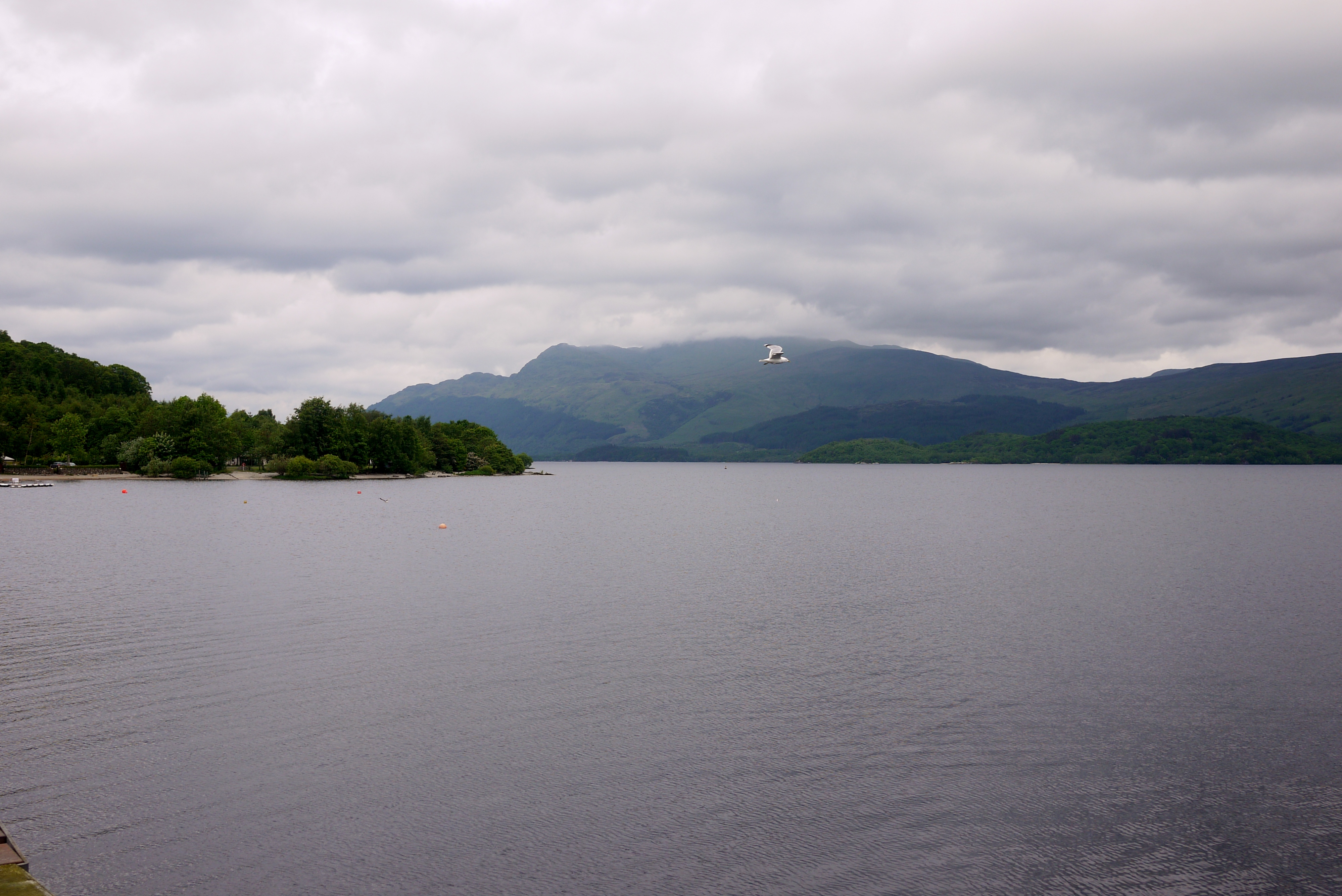Somehow the solstice managed to sneak up on me almost unawares, so plans ended up being a little impromptu, to say the least. I had a vague idea that I'd go to the beach and do...stuff. Like I usually do. But beyond that my brain hadn't really got much further.
So it happened that the solstice was at the weekend this year, and seeing as Mr Seren was working, any plans would have to include the kids. I usually like to go to the beach around sunset, if I can, but that would be too late for the kids. In the end, after I explained to them that what "solstice" means, we decided that an early evening picnic would be just the thing. We prepared a wee feast (and offerings) to take with us, and set off with the dogs for a long walk.
This year I've pretty much given up on gardening - not for lack of enthusiasm, but because I know it's just too much for me to able to handle. Although I'm doing a lot better these days, my back is still a delicate and temperamental beastie, and overdoing things doesn't go well for me. A lot of the containers I've been using are pretty much done for now, and replacing them will involve too much heavy work, so I haven't planted any veg this year. Instead, I'm just concentrating on the fruits that are happily chugging along left to their own devices, but a side effect of my general gardening neglect is realising that what I had thought was a weed that was trying to propagate itself all over my flower beds is actually a type of rush. Which is very timely, considering.
The first Midsummer after moving here I took a long walk through the village, down to the beach where I made my offerings. That time I found a rock covered in tiny fossils:
I took it home with me, interpreting it a sign of some sort of gift of acknowledgement (as I noted in a long and rambly post here), and it lives on my shrine now.
And like I said in that post, it's not a fossily beach. Since finding that fossil, I've not found another one at all, in spite of keeping a lookout for them whenever I go. Except yesterday, while we were having our picnic, Rosie found an even bigger rock that's covered in the exact same fossils - right where we were sitting:
I suggested to Rosie that she should ask the beach if it would be OK to take it home; we mustn't take things without asking. So Rosie asked, and cocked an ear briefly, and then said yes, the beach said we could take it home. But we had to give something back in return. We had to feed the beach as a thank you.
Luckily I'd come prepared, with some things as an offering to Manannán to "pay the rent," along with some offerings to the spirits of the beach. We built a wee cairn right by where we'd had our picnic, like we usually do, and picked up some of the litter that had been left by previous parties:
And after the dogs had had a good run around and a swim, and Tom had given Rosie some lessons in skimming stones:
We headed up to the rocks where I usually make my offerings. First we made our offerings to "feed the beach," and both Rosie and Tom insisted that they should do it themselves, so I gave them some of the food I'd brought and left them to it while I prepared the offerings for Manannán:
It's the first time that Tom's asked to take an active role in anything related to our celebrations - I'll invite them to watch and join in with the words if they want to, and sometimes he does, but Rosie's always been much more interested in taking an active role than her brother has so far. So this was the first time he's really done anything by himself. He asked about all the different kinds of ways he could say thank you (in Gaelic - they've been learning a bit. Slowly), and I gave him a few ideas of what to say and he put them together into his own prayer.
When the kids were done, I climbed down into a wee cove to pay the rents while the kids watched the dogs and made sure Eddie didn't decide to take a dive down to join me. Tom started singing a random song as he wandered about on the rocks, and Rosie clambered down to be with me while I prayed and made my offerings. Once I was done, I climbed back up on to the rocks and made a libation (I don't like to pour drinks into the sea, in case it upsets the sealife), and the kids followed suit with some of the juice they'd brought with them. Tom wanted to know if Manannán has a trident like Poseidon does, and was very disappointed to hear that he doesn't. He suggested that we should make him one, while Rosie suggested that we could make a small boat and put messages in it that we could send to Manannán out at sea.
Just as we were chatting, the sea suddenly began to make a roar - the waves picked up and the acoustics in the cove must have amplified the sound, and the sudden noise was startling. The waves rose and lapped at the offerings I'd laid down, and they started to drift away. The kids gasped and got really excited and Tom decided it was awesome. We all agreed that our offerings had been well-received.
Rosie's resolve to make a boat for Manannán was cemented, and as we made our way home it was all she could talk about. By the time we got home we were all pretty tired from the long walk and the excitement, and we all just collapsed for an hour or so before the kids had to go and get ready for bed. I even had a short nap.
All in all, it's one of those times when I'm reminded that even the most impromptu kinds of observances can make for pretty powerful experiences, and being able to share it with the kids puts a whole new perspective on things; thinking about what it all means to them. Thinking about how it will shape their outlook as they grow older, and the kinds of things they'll look back on as being meaningful moments. In a way, it makes it all the more meaningful to me, as well; it adds layers.
But for now, the days are growing shorter and the summer holidays are looming. Six glorious weeks of no homework, as far as the kids are concerned. We'll hopefully manage a family holiday away at some point, and the kids are going away with their cousins and Nana for a while, too. One thing's for sure is that there'll definitely be a few trips to the beach again, if the kids have anything to say about it.
Sunday, 22 June 2014
Tuesday, 10 June 2014
Onwards to Bute
After Loch Lomond (in my previous post), we decided to take the ferry over to Bute in honour of one of my friend's birthdays; her day, her choice. After having spent many an hour for mythical buses on one of our trips over to the island, we decided to take the car with us this time, so we could explore more of the island at our own leisure - the bus service is actually pretty decent (if you read the timetable... *ahem*) but it doesn't take you to the more remote areas and I think you're probably less likely to get stuck behind many many cows who'd quite like their lunch please. The ones above were waiting to join their friends already on the road. Driving around the island made a nice change from visiting the castle at Rothesay yet again - don't get me wrong, it's a good castle, as castles go, but I've been there four times now, most recently with my sister and nephews when they came to visit at Easter. The weather was considerably nicer then, though.
We took a stop at one of the beaches first, then went on to find a derelict church, which turned out to be an early medieval monastery founded by St Blane. The place was a bit of a hike to get to, but beautifully situated in a very sheltered spot near the top of a hill, overlooking the coast:
It's a shame it wasn't sunny, but at least the rain held off until we were ready to get back to the car, and I guess the weather gives its own mood to the place...
The path up to the site was home to many many sheep and lambs:
Who were quite skittish and suspicious of us at first. They seemed to calm down if you baa'd at them, so why not...
But anyway. Up at the monastery there's a mixture of early medieval and then more recent ruins. The church itself has twelfth century bits, but it's mostly later, up to the eighteenth century when it fell out of use. Some of the surrounding remains, including a well and some surrounding ruins of buildings of "indeterminate purpose" are probably early medieval but it doesn't seem like there's been much investigative work (or if there has, no one's updated the information plaques) to date things; the monastery itself was established in the sixth century, though.
After the site fell out of use as a monastery it was used as a church for locals in the area - quite a trek to get to, I'd say. The graveyard was segregated, with the men and (earlier) the monks on the higher terrace, closest to the church, and the women buried on the lower terrace:
Here's a moody view of the church from the side(ish):
And here's more of the lower terrace, where you can see the rounded vallum (boundary wall), which tells you it's the original, early medieval boundary for the monastery:
Considering how early the monastery is, it's not surprising to find that it's situated just down the road from a stone circle and a stone row - sites like this were often plonked right in the middle of already significant, sacred areas. Maybe it was supposed to help provide a sense of continuity - a change in religion, but not too big a change in setting, perhaps - or maybe it was just practical (to be fair, it's a smallish island. It's pretty hard not to fall over the odd standing stone or stone circle somewhere).
As we made our way back to the main road we stopped in at the Blackpark stone circle. Only three stones remain now, and I don't think the surrounding forested area would have been there when the circle was in use so it was difficult to get a sense of the place. The layout seemed pretty odd to me, but I think that's because of an attempt at restoration on one of the stones, which fell down and seems to have been put back up on top of a small mound, for some reason. One of the stones is extremely weathered and it seems like an aggregate of some sort, different to the other rocks (it's the one being propped up), which is also unusual:
The larger stone, on the left, has cracked in several places due to frost, and is almost completely split in half now. To the left of that one there's the other stone, which is much smaller than the others and it's been graffiti'd over the years.
Just down the road, between the circle and the monastery, is the Largizean stone row. It's about a 30 minute walk from the circle (according to the information board), but we doubled back in the car to save our legs a little. It was still a bit of a walk along a track to get to it, and it's stuck right in the corner of a field. Looking back towards the stone circle:
And then looking out to sea in the direction they seem to be pointing:
I don't have an exact date on the stone row or circle, but I'm guessing they're most likely to be late Neolithic. Possibly early Bronze Age, so roughly 4,000 years old or so.
We toured around the rest of the island after a spot of lunch, just so we could say we'd been to the Highlands proper - the Highland line intersects only part of the island - and stopped in briefly at Ettrick Bay (which is a beautiful sandy beach, when it's sunny and the tide's out). The weather was really turning on us at that point, but apparently there's a stone circle near the beach as well, so that's something I might hunt out at some point - the beach is easy to get to by bus from the main town, so if we don't manage a holiday away this summer I might take the kids there.
I think that's enough pictures and blether now...
Sunday, 8 June 2014
In which I left the house and Did Stuff
All last week I had some friends visiting, much to my excitement because it meant I got to Do Stuff With Grown Ups. Mr Seren graciously (in his own special way, i.e. with much good-natured whinging and moaning) took charge of the kids while I went off gallivanting around Scotland and all kinds of fun stuff. I finally got around to going to visit Paisley Abbey and spied the xenomorph carving:
Which was pretty high up so the picture is grainy because it's so closely cropped; I first learned about the xenomorph from some links that went viral a while ago and the abbey went on to my list of places to see and then I promptly forgot about it. But seeing as we were going to be nearby, at the museum, and had an hour to kill before that opened, the abbey was a good opportunity. There were some beautiful stained glass windows there as well (and a very talkative warden).
I'll start with our trip to Luss in Loch Lomond, though, and given the amount of pictures I took I'll probably spill over into a couple of posts after this. Loch Lomond was our first big day out (involving lunch and cake, naturally). I've been there many times now, but this time I had the chance to wander around a bit more and we visited the village church as well. The village itself is very picturesque (here's some I took from a previous visit, when it was sunny):
The church is really unusual, with the pulpit and font situated in the middle so everyone sits around it and can face each other. It's also beautifully done inside, but I didn't take too many pictures because the warden (or whoever he was) was very obliging in giving us a history and I didn't want to appear rude while he was talking. The font was originally removed sometime after the Reformation and buried under a cairn of stones not too far away, to protect it from being destroyed. It was eventually replaced after being discovered by soldiers, who brought it back to the church (which had been rebuilt by then). I didn't take a photo of it, but I did get a picture of the statue of St Kessog:
Who seems like a cheery fellow. He's said to have brought Christianity to the area over 1500 years ago, and according to the Wikipedia link he used to be the patron saint of Scotland before St Andrew took over; his name was also used as a battle cry. There's a wee trail behind the church that goes into the history, which starts off with a beautifully carved cross that spells out "coexist," which is a nice touch. And there are some beautiful views of the hills, that are still covered in bluebells at the moment:
You can kind of see the Celtic cross there as well. There are memorial trees planted all around the edges of the field and the guy we spoke to inside the church said they plant a fruit tree for each Christening they do, so they have an orchard as well, which is a nice touch. Some of memorials were for kids, which is just heartbreaking to see, with the teddy bears and kids' toys at the base of the trunk.
Back in the churchyard there's a Viking hogback - about tenth century in date, I think - lurking amongst the more recent gravestones:
They don't tend to have inscriptions so I'm not sure who it's for, and it seemed smaller than the ones I saw at Govan last year. I don't think I've ever seen one in situ before so maybe it just seemed wee by comparison, but I think it's sunk a bit and weathered a lot, going by the Canmore records.
Down at the shore there are some views of Ben Lomond, which marks the start of the Highland line:
And there's also a nice wee shop by the pier, with possibly the most talkative proprietor EVAR. Enter if ye dare... The shortbread's nice but you might never leave.
The next day we did Bute by car, so we got to see more than just the usual. In spite of the weather, which was a little changeable, it was a fab day, but I'll leave that for the next post. Or possibly two, because I kind of went to town with the camera that day.
Which was pretty high up so the picture is grainy because it's so closely cropped; I first learned about the xenomorph from some links that went viral a while ago and the abbey went on to my list of places to see and then I promptly forgot about it. But seeing as we were going to be nearby, at the museum, and had an hour to kill before that opened, the abbey was a good opportunity. There were some beautiful stained glass windows there as well (and a very talkative warden).
I'll start with our trip to Luss in Loch Lomond, though, and given the amount of pictures I took I'll probably spill over into a couple of posts after this. Loch Lomond was our first big day out (involving lunch and cake, naturally). I've been there many times now, but this time I had the chance to wander around a bit more and we visited the village church as well. The village itself is very picturesque (here's some I took from a previous visit, when it was sunny):
The church is really unusual, with the pulpit and font situated in the middle so everyone sits around it and can face each other. It's also beautifully done inside, but I didn't take too many pictures because the warden (or whoever he was) was very obliging in giving us a history and I didn't want to appear rude while he was talking. The font was originally removed sometime after the Reformation and buried under a cairn of stones not too far away, to protect it from being destroyed. It was eventually replaced after being discovered by soldiers, who brought it back to the church (which had been rebuilt by then). I didn't take a photo of it, but I did get a picture of the statue of St Kessog:
Who seems like a cheery fellow. He's said to have brought Christianity to the area over 1500 years ago, and according to the Wikipedia link he used to be the patron saint of Scotland before St Andrew took over; his name was also used as a battle cry. There's a wee trail behind the church that goes into the history, which starts off with a beautifully carved cross that spells out "coexist," which is a nice touch. And there are some beautiful views of the hills, that are still covered in bluebells at the moment:
You can kind of see the Celtic cross there as well. There are memorial trees planted all around the edges of the field and the guy we spoke to inside the church said they plant a fruit tree for each Christening they do, so they have an orchard as well, which is a nice touch. Some of memorials were for kids, which is just heartbreaking to see, with the teddy bears and kids' toys at the base of the trunk.
Back in the churchyard there's a Viking hogback - about tenth century in date, I think - lurking amongst the more recent gravestones:
They don't tend to have inscriptions so I'm not sure who it's for, and it seemed smaller than the ones I saw at Govan last year. I don't think I've ever seen one in situ before so maybe it just seemed wee by comparison, but I think it's sunk a bit and weathered a lot, going by the Canmore records.
Down at the shore there are some views of Ben Lomond, which marks the start of the Highland line:
And there's also a nice wee shop by the pier, with possibly the most talkative proprietor EVAR. Enter if ye dare... The shortbread's nice but you might never leave.
The next day we did Bute by car, so we got to see more than just the usual. In spite of the weather, which was a little changeable, it was a fab day, but I'll leave that for the next post. Or possibly two, because I kind of went to town with the camera that day.
Subscribe to:
Comments (Atom)
